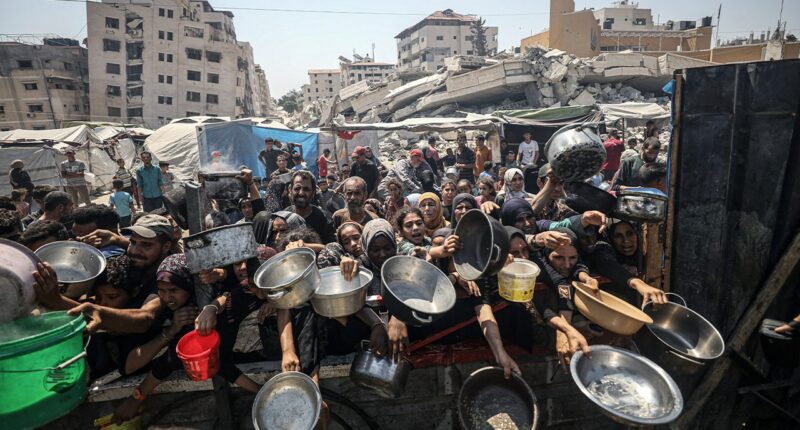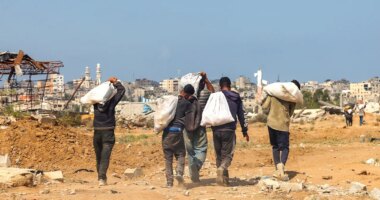Share this @internewscast.com
As humanitarian aid continues to pour into Gaza following a ceasefire deal brokered by Donald Trump, questions are being raised about the accuracy of famine reports in the region. An expert is challenging claims made by the Integrated Food Security Phase Classification (IPC) regarding famine conditions in Gaza this past summer, and is scrutinizing the agency’s connections.
“Famine is distinct from mere hunger or deprivation because it results in death,” David Adesnik, the vice president of research at the Foundation for Defense of Democracies, told Fox News Digital. He explained that according to the IPC’s criteria, a famine is declared when two out of every 10,000 people die each day. “Given this definition, a famine in Gaza should have led to approximately 9,000 deaths due to hunger or related diseases,” Adesnik stated. “However, they lacked data to confirm such a mortality rate had been met.”
On August 22, the IPC reported that one governorate in Gaza was experiencing famine and predicted that two more would be affected by September 30.
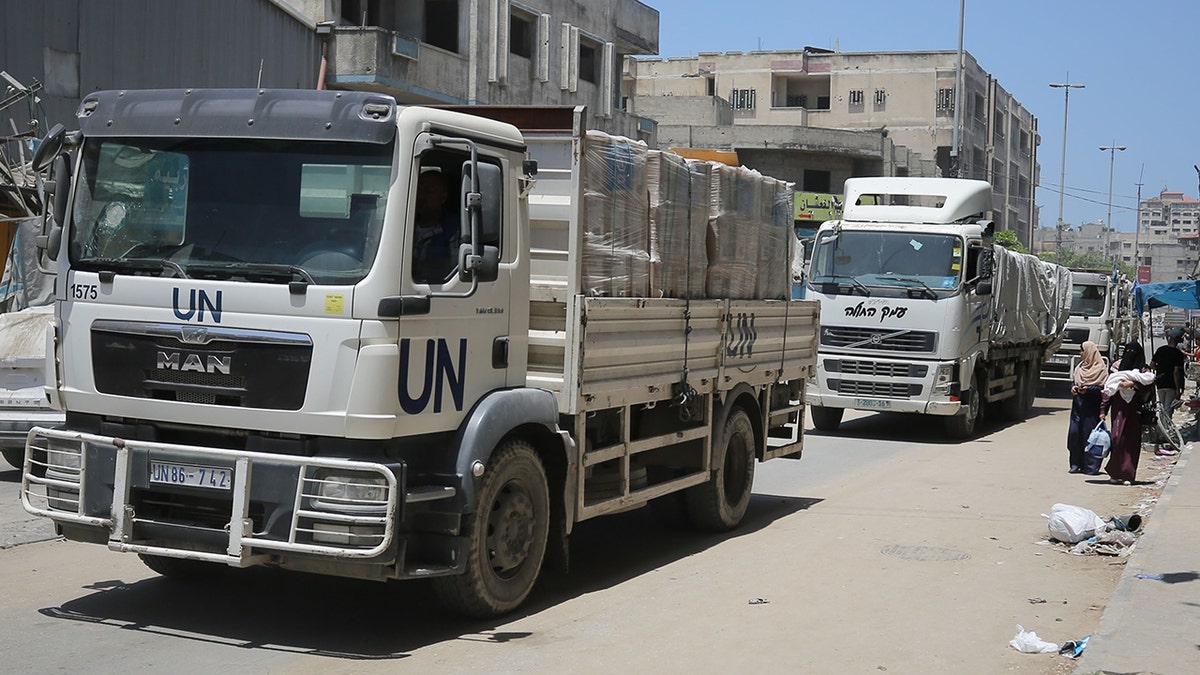
Meanwhile, the United Nations Relief and Works Agency for Palestinian Refugees in the Near East (UNRWA) continues its efforts, delivering aid near Gaza City on June 19. (Dawoud Abo Alkas/Anadolu via Getty Images)
According to the Hamas-controlled Gaza Ministry of Health, as of August 22, 273 Palestinians had succumbed to famine and malnutrition over nearly two years of conflict. By October 7, this figure had risen to 460, marking an increase of 187 deaths.
“The death of those 187 individuals is undoubtedly tragic,” Adesnik remarked. “However, claims of famine should be substantiated by solid evidence.”
He noted that “the IPC forecast a major worsening of the food security situation,” which he said “should drive prices substantially higher. But in fact, we’ve seen the opposite.”
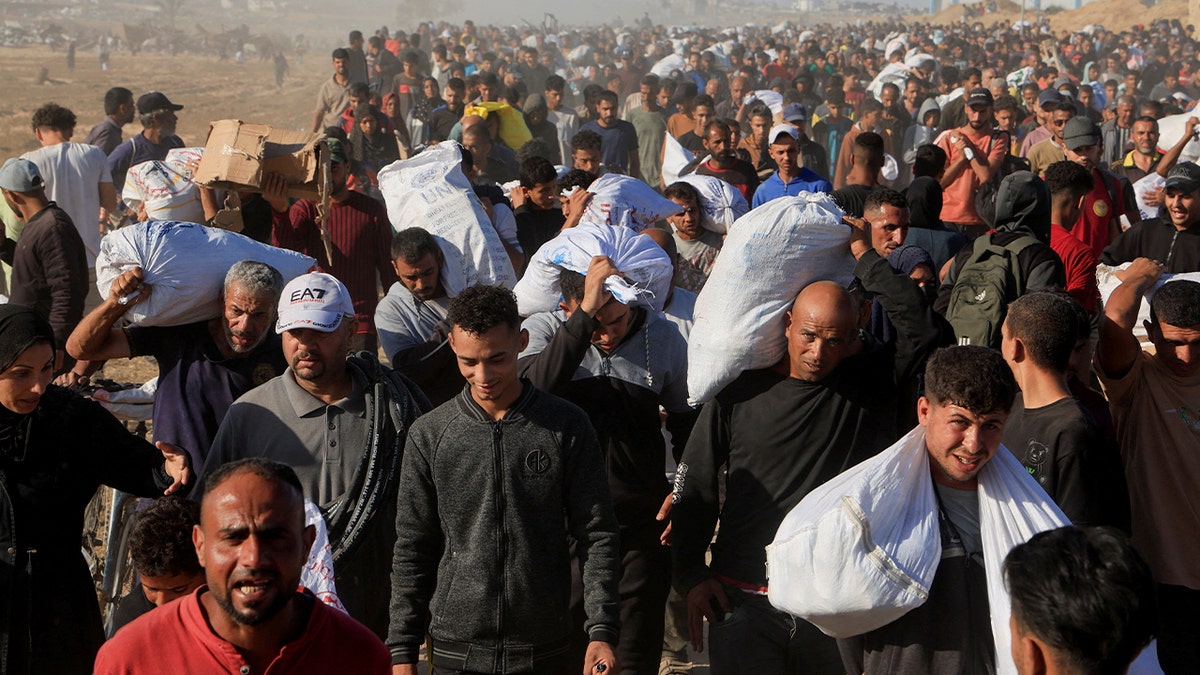
Palestinians carry aid supplies from the U.S.-backed Gaza Humanitarian Foundation, in Khan Younis, in the southern Gaza Strip, May 29, 2025. (REUTERS/Hatem Khaled)
The World Food Programme’s Palestine Market Monitor shows that prices for 60 of 89 key food and non-food necessities in three Gazan governorates have remained the same or declined between the last week of August and the third week of September.
Fox News Digital asked the IPC, WFP, U.N. Office for the Coordination of Humanitarian Affairs (OCHA) and U.N. Food and Agriculture Organization (FAO) whether they believe, given data on food pricing and mortality rates, that there is famine in Gaza. OCHA and FAO deferred to the IPC, which did not respond.
Sources also question whether there may be bias in the IPC’s famine predictions. The IPC does not name the non-governmental organizations, government institutions and U.N. agencies that are part of its overarching governance structure. These organizations also provide personnel who “support the funding, implementation and institutionalization of IPC at the country level” as Technical Working Group (TWG) members.
The IPC did not respond to questions about which NGO and U.N. entities are part of its organization or how their salaries are paid.
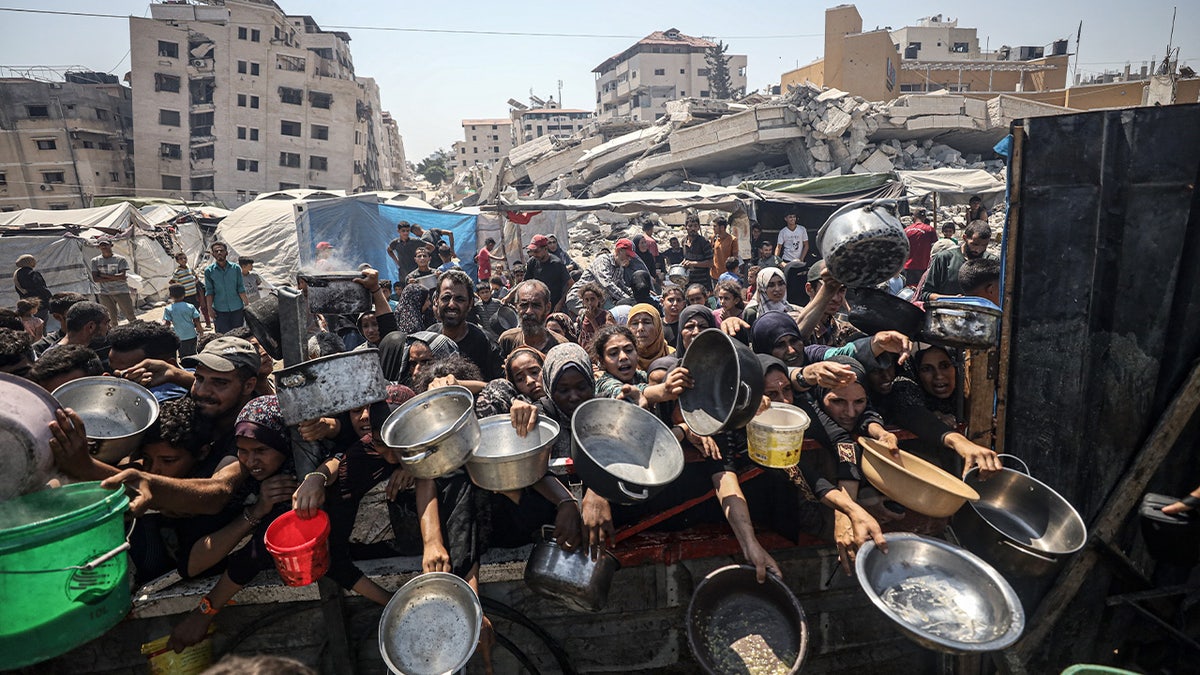
Gazans wait for food aid in Gaza in July. Critics have questioned the Integrated Food Security Phase Classification’s famine classification for one Gaza governorate and projected it to reach two others by September. July 23, 2025. (Khames Alrefi/Anadolu via Getty Images))
Recently, U.N. agencies and international NGOs have come under fire due to allegations of alignment with Hamas.
Eri Kaneko said that OCHA does not participate in IPC TWGs. The FAO told Fox News Digital, however, that during crises, “the IPC coordinates global analyses with technical experts from several partner organizations, including FAO, WFP, UNICEF, OCHA, and others from the wider IPC network, such as international and national NGOs.”
The U.N.’s food distribution model has been questioned due to the severity of looting from both armed and unarmed actors. The United Nations Office for Project Services (UNOPS) shows that 80.5% (6,800 of 8,440) of U.N. trucks have been intercepted since May 19.
“That can’t possibly be the fairest way to distribute aid,” Adesnik said. “There’s some indication that when in a situation like that, it’s the strongest who can claim their share of the aid. And that’s sort of the opposite of how we probably like it to be, and it doesn’t seem the U.N. is doing anything to fix the situation.”
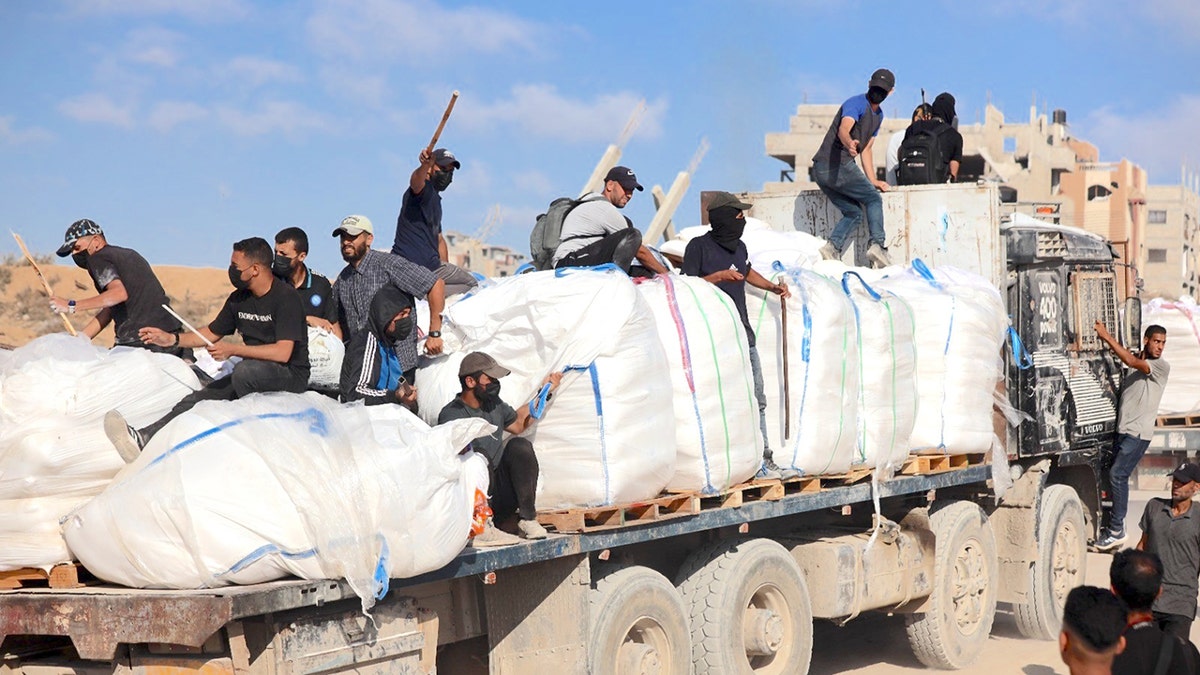
Hamas terrorists carrying clubs and firearms secure, and divert humanitarian aid trucks in the northern Gaza area of Jabaliya on June. 25 (TPS-IL)
Kaneko said that aid interception “is a serious concern.” According to Kaneko, the U.N. plan for scaling operations “focuses on resuming community-based and household-level distributions – the most effective way to ensure that aid reaches the most vulnerable.”
She said that in addition to the ceasefire,”for our plan to succeed, we also need open crossings; safe movement for civilians, including aid workers; unrestricted entry of goods; visas for humanitarian staff; space to operate; and a revival of the private sector.”
Since the ceasefire began, OCHA reported that there was “a possible reduction in the rate of interception.” As of Oct. 17, UNOPS shows that slightly more than 75% of items shipped into Gaza have arrived at their destinations since May.
Adesnik also addressed concerns about changes in OCHA Humanitarian Situation Reports, which previously described the proportion of aid seekers it claims perished in the vicinity of Gaza Humanitarian Foundation (GHF) distribution sites versus those who died in the vicinity of U.N. aid convoys.
Not long after reports between July 21 and Aug. 18 indicated that more aid seekers perished at U.N. convoy sites (576) than near GHF distribution sites (259), Adesnik said, “we noticed that for the first time, [OCHA] omitted that number of people killed while seeking aid. ” Adesnik said he wonders whether “because the numbers turned against them, they’re just going to stop reporting it.”
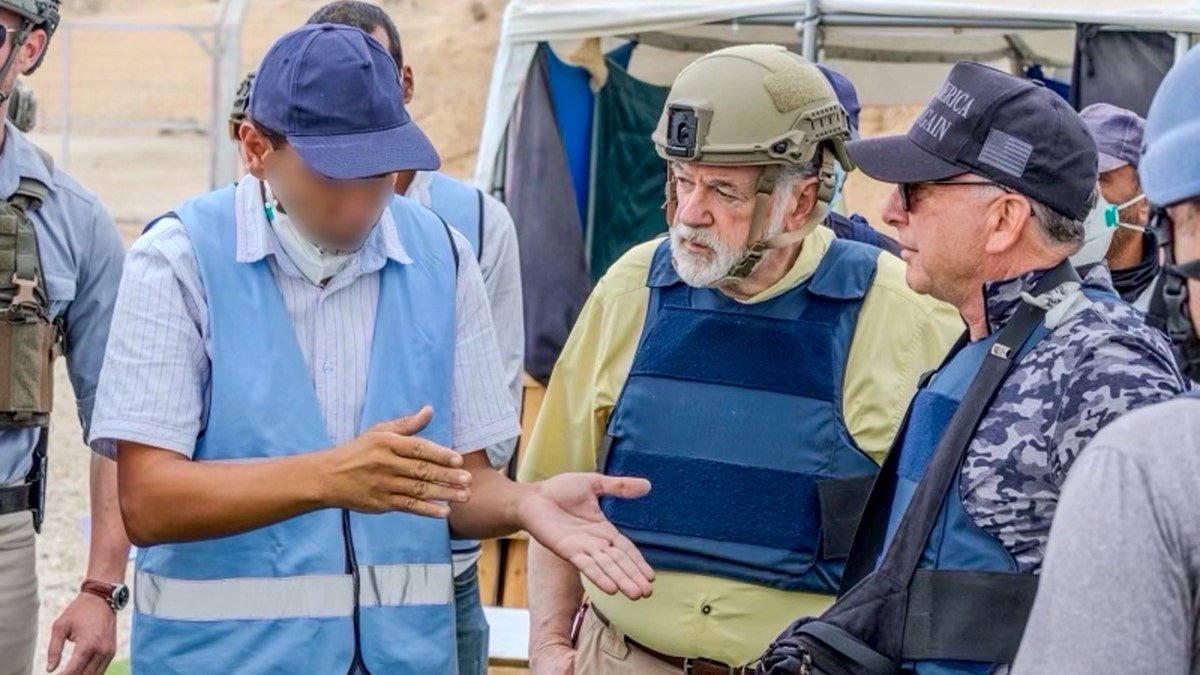
U.S. Ambassador to Israel Mike Huckabee and Special Envoy Steve Witkoff speak with an air working in Gaza as they visit a distribution site run by the U.S.- and Israeli-backed Gaza Humanitarian Foundation. (Gaza Humanitarian Foundation)
Kaneko indicated that the change is temporary, explaining that data on deaths around convoys and distributions is “typically provided by two sources and always attributed accordingly” and that “if no new data is received from either source by the time an update is finalized, figures from that source may only appear in a subsequent update.”
Starting delivery of aid in May, the U.S. – backed Gaza Humanitarian Foundation has delivered more than 185 million free meals to Palestinians, with some asking whether they could be a replacement or addition to the U.N./NGO system. A GHF spokesperson told Fox News Digital that GHF “has conveyed its openness and flexibility to adapt to U.N.-established norms” and “has been offering, for several months, to help the U.N. and other humanitarian groups deliver their aid securely and safely into Gaza.”
Adding further confusion to the question of hunger in Gaza was a statement on X from UNRWA Commissioner-General Philippe Lazzarini, who recently said, while praising the ceasefire agreement that his agency has “enough to provide food for the entire population for the coming three months.”
In response to the claim, Adesnik noted that “For the past five months, the U.N. has sent in thousands of trucks, knowing eight or nine out of ten would be looted. If they had coordinated with Israel on security, that aid could’ve been delivered into the hands of those who needed it most.”
